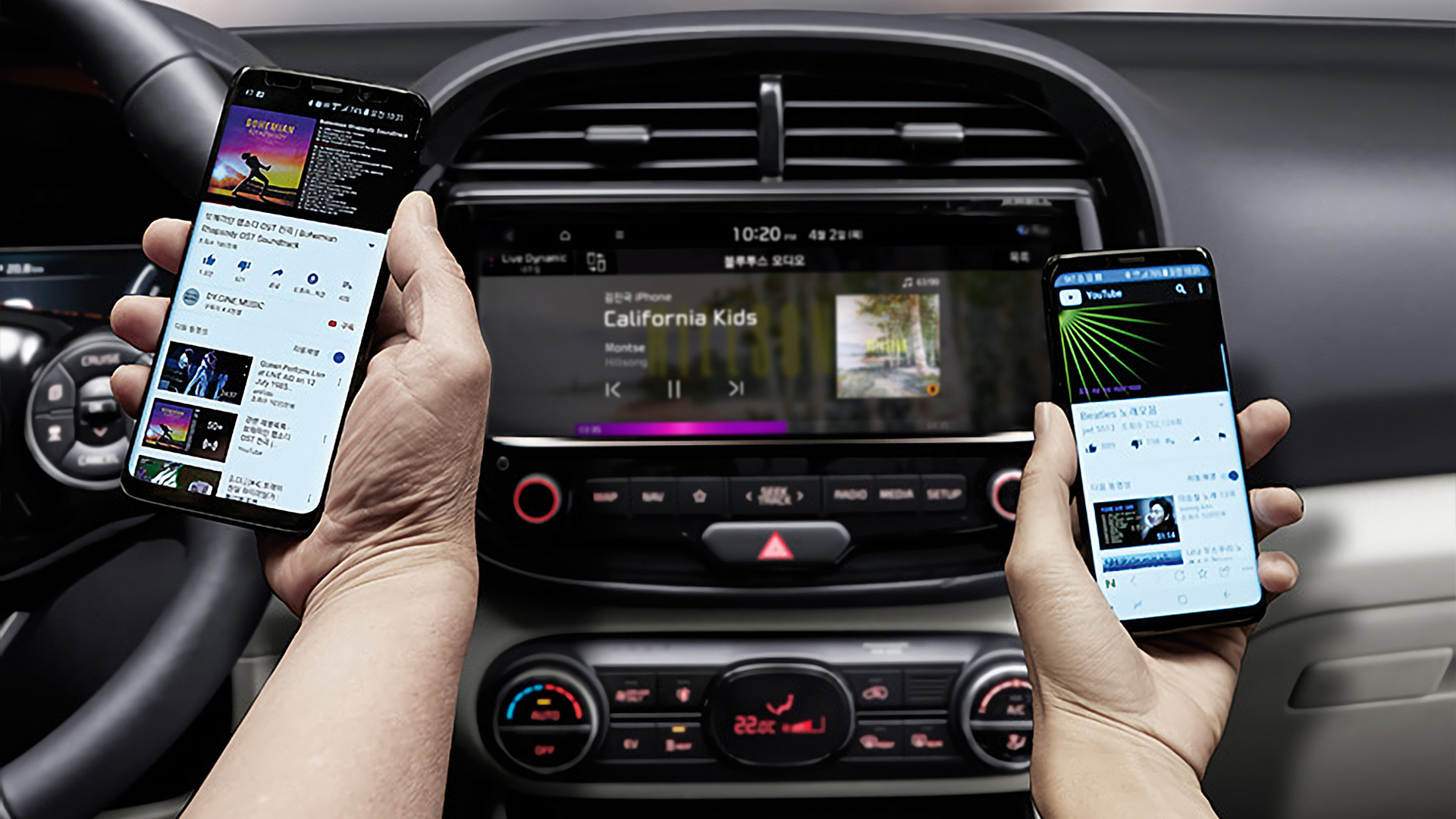
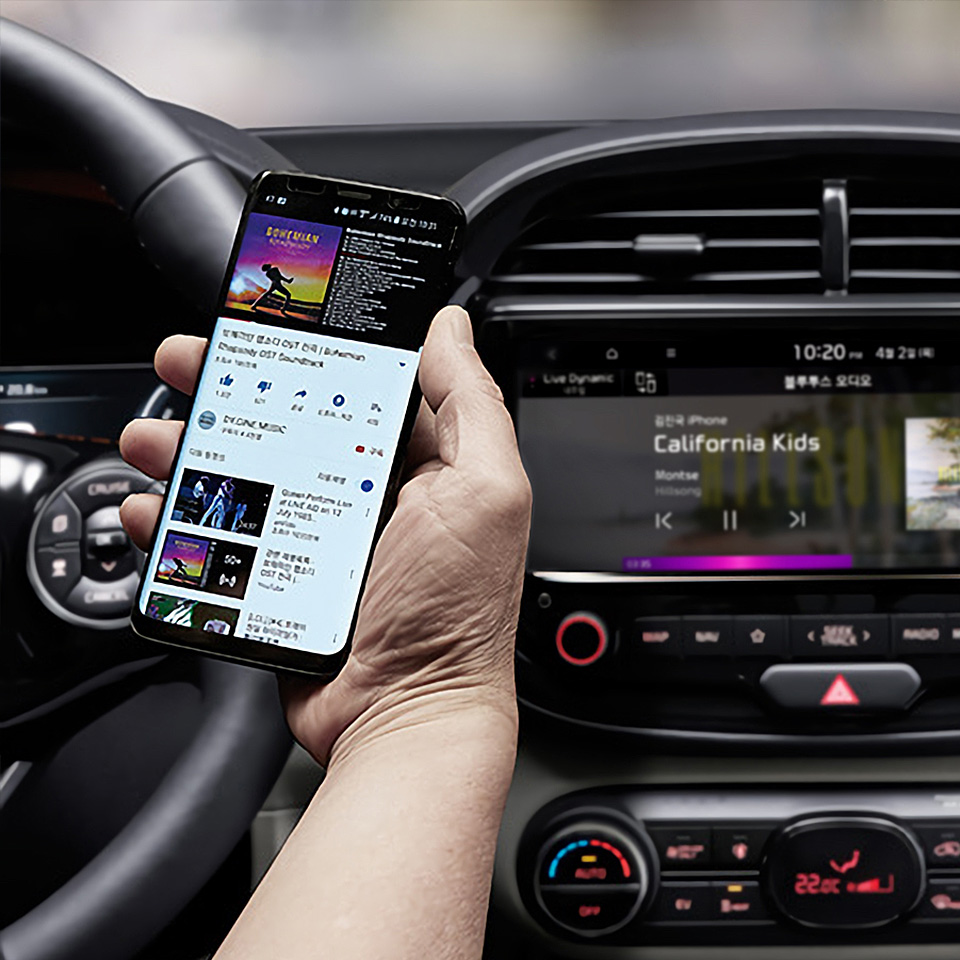


One recent trend of the electronics market is going cordless: the annoying cables that we used to take for granted in our electronics are now increasingly disappearing. Perhaps the best example of such a trend in the audio industry is Apple’s megahit “AirPods.” Using Bluetooth, the global standard for the short-range wireless connection, Airpods offer great convenience that makes them a staple of countless music lovers.
Bluetooth is nothing new when it comes to automobiles, however; Bluetooth music streaming has always been one of the most convenient ways to enjoy music in cars. Thanks to the technology, drivers have been able to enjoy music in their smartphones without having to plug them into the car.
Hyundai Motor Group’s first application of the Bluetooth technology in its vehicles was 2008; since then, the technology’s application has expanded to now become standard feature. Now, even the Bluetooth multi-connection function, which allows two smart devices to be connected to the audio system at the same time, is available in many models.

Bluetooth music streaming is now widespread enough to be considered the standard for all vehicles, regardless of segment or trim; with the ever-growing smartphone industry comes the demand for convenient music-listening in the vehicle. In response, smartphone manufacturers are offering new features targeting music lovers, such as high-res audio playback and codec support, contributing to the current omnipresence of digital music.
At least in Korea, the rise of wireless music also derives from the country’s residential arrangement. With tightly packed apartments being the main mode of living, between-floor noise always brings stressful controversy for many. Listening to music―at high volumes in particular―is essentially impossible for the apartment-dwelling audiophile, whose “music enjoyment room” can never run at full capacity.
But cars are different. It allows music lovers to enjoy the music of any genre in an isolated environment―a minor concert hall, if you will. The demand for high-res audio in a car thus has been seeing increasing demand.
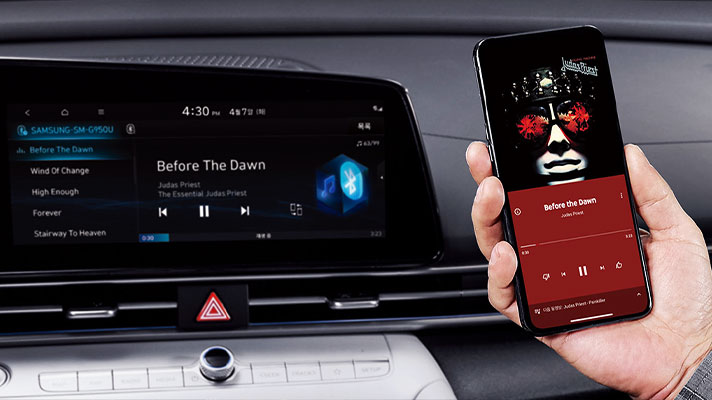
So exactly how does music play in a car via Bluetooth? Once the driver initiates the Bluetooth music streaming function in the infotainment system, the system connects to the smartphone and requests for the audio codec necessary to play the music. Codec, a term commonly used in the multimedia industry, represents a function that: 1) converts the visual and audio signal into a digital archive that can be saved on a device (i.e. a coder) and 2) decodes the said archive into visual and audio signals for playback (i.e. a decoder).
Once Bluetooth is selected for playback, the codec undergoes the process of compressing (encoding), transmitting, and decompressing (decoding) before playing the music. Perhaps an analogy for a snowball fight might be useful here. To prepare for the fight, one needs to put together snow (i.e. music) into snowballs (encoded archive). A well-made snowball can be thrown (i.e. transmitted) without crumbling mid-way, arriving safely at the target (decompressing/decoding). By far the most important process here that determines audio quality is encoding: to use the analogy again, only a good codec does a good snowball make.
Two of the most common audio compression methods for automobiles are the Sub-Band Coding (SBC) and the Advanced Audio Coding (AAC). The codec can be only used if it is supported by both the smartphone and the infotainment system; this is why whether the infotainment system supports the high-res audio codecs is important.
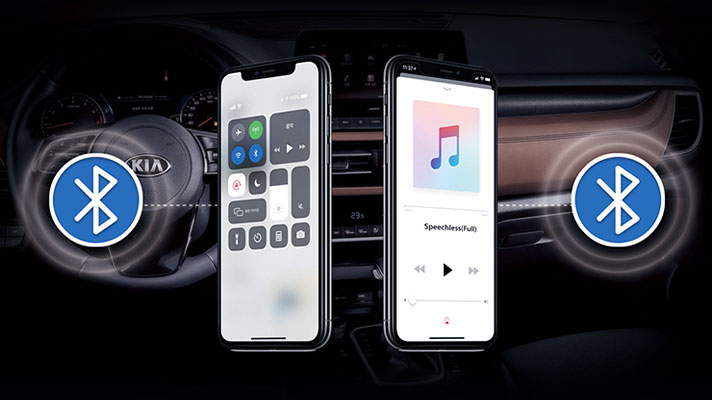
Can drivers really feel the difference in audio quality that results from the choice of codec? To answer this question, we first need to understand the characteristics of the two codecs being discussed, the SBC and the AAC.
The SBC codec is the most commonly used audio codec in automobile Bluetooth streaming. It features a simple algorithm, resulting in low energy consumption, and, because it does not require a license fee, it is supported universally in all sound systems. Its compression method is similar to that of the MP3, archiving the audio signal by the frequency band. While simple, the method is relatively inefficient and results in a non-negligible loss of audio quality.
The SBC codec also uses the fixed bitrate method, which means the amount of data it can handle per second (i.e. bitrate) is fixed regardless of the size of the audio file. Suppose an audio file is a very simple one. Even if the amount of data in the file is low, the fixed bitrate method has to fill the archive to the fixed threshold, so it will input meaningless data to fill the void in the original. This needless insertion of empty data, of course, implies that the archive will often lose the pristine recording of the original.
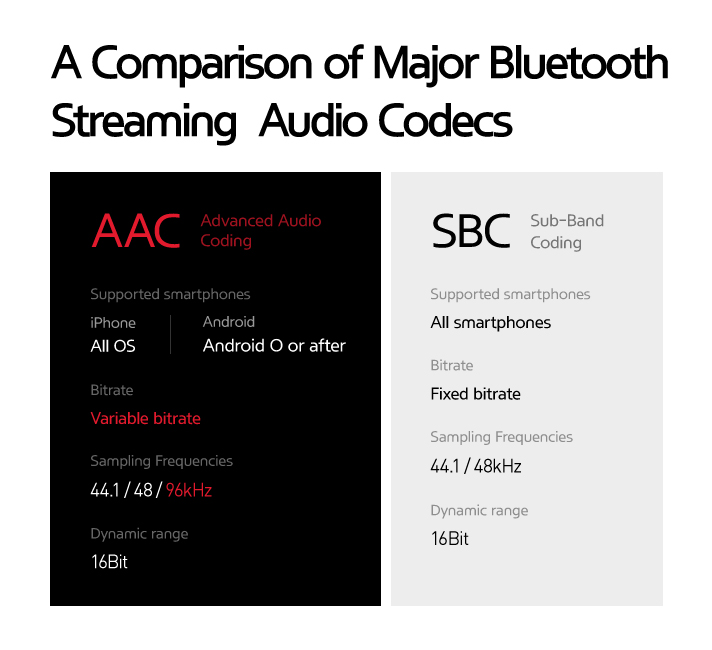
On the other hand, the AAC codec is a high-res audio codec designed to fill the lack of the traditional MP3. It boasts excellent compression efficiency and a wider range of sampling frequencies, resulting in a relatively lossless conversion of the original. The variable bitrate technology is the real difference-maker here: its algorithm is such that when there is a lot of data in the original, it increases the bitrate for added precision. When there isn’t much data to handle, it decreases the bitrate and focuses on efficiency. Needless to say, the variable bitrate requires a more intricate algorithm capable of performing more complex calculations.
Moreover, the AAC’s compression efficiency is heads and shoulders above the SBC’s. Higher efficiency in archiving basically translates to reduced audio loss from the original―or, in other words, improved audio quality. The sampling frequency in 96kHz also allows for high-res audio playback in a way that the SBC codec cannot mimic. To explain, sampling frequency is directly proportional to audio quality. For example, recording audio CD’s happens in the frequency band of 44.1kHz―what this means is that the audio data is sampled 44,100 times per second for recording purposes. The AAC more than doubles on that figure―96kHz, or 96,000 times―and thus can produce more precise, higher-quality audio playback.
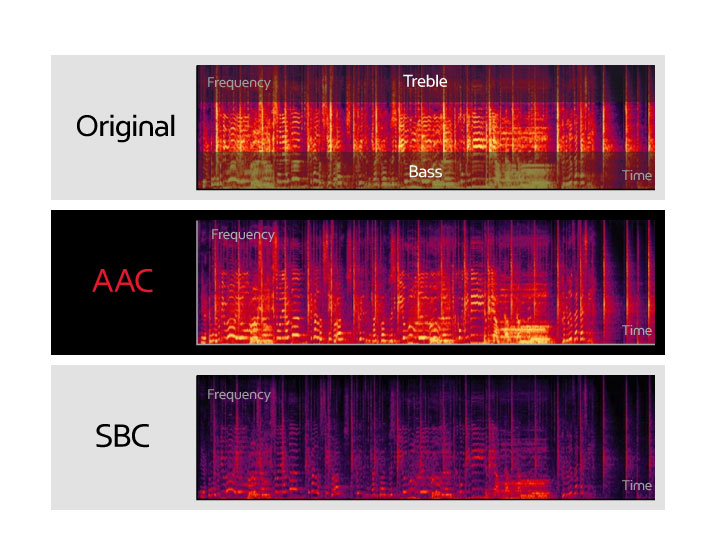
Empirical measurements reveal significant differences of audio quality between the two codecs. Comparing the energy difference by the frequency band (as represented in the figure above), the difference appears stark in the high-treble and the low-bass ranges. The SBC’s spectrum reveals significant loss compared to the original’s, whereas the AAC’s comes close to reproducing it. What the figure reveals is that using the SBC codec will lead to the imprecision in, as well as the diminution of, the highest and the lowest audio ranges. As the importance of these ranges are typically amplified in an isolated car, the difference between the SBC and the AAC codecs for in-car audio enjoyment is unmistakable.
For the predominant many who enjoy music only through online streaming services―which play the original without the compressing processes, unlike the CD’s that require the archiving of the digital signals―the AAC will feel right at home in terms of audio quality. Trying to listen to the music processed via the SBC codec, however, will feel like a loss compared to the ears pampered to the modern high-quality audio.
The AAC codec is available in Hyundai’s latest infotainment systems; the 6th-gen Premium, 5th-gen Premium, and 5th-gen Standard W have the AAC codec as the default setting. For the Hyundai drivers in use of these systems, simply using the Bluetooth feature will allow them to enjoy the high-res audio experience.
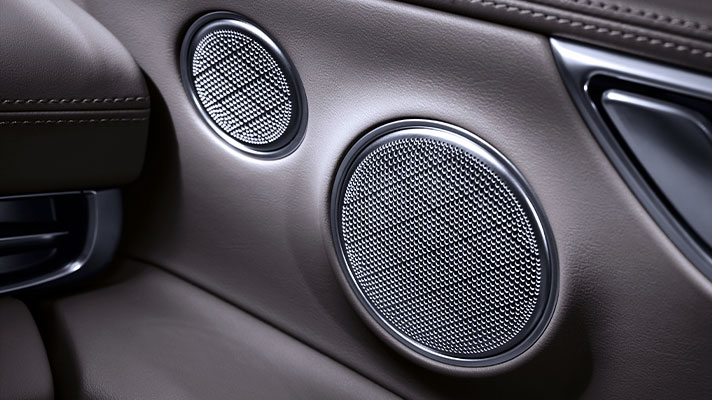
The advanced codec may have been meaningless, had it not been for the quality of the amp and the speaker, through which the sound from the codec is amplified and released. But the Hyundai audio systems, fortunately, are built to properly and capably reproduce the Audio Frequency (the range between the 20Hz and 20kHz band that are discernible to the human ear), regardless of the segment. Simply put, the speakers are good enough to handle the demands of the high-resolution audio from the codec.
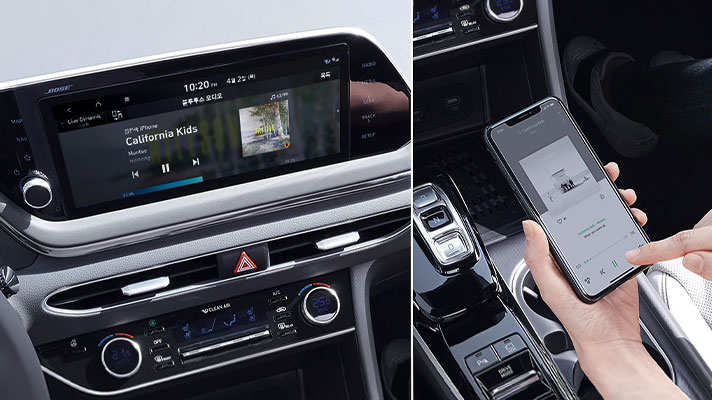
Hyundai is also working hard to maximize the driver’s convenience in using the Bluetooth streaming feature. One good example of such efforts is the SoundHound album art search & display feature, which was added to the navigation software via a January update. While Bluetooth streaming is active, SoundHound will search its database and display the associated album art if the audio file in the smartphone does not come with it.
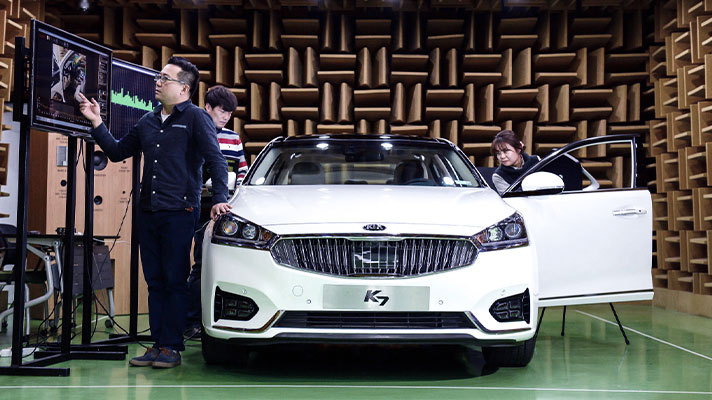
The larger philosophy of the Hyundai Motor Group in its pursuit for sound quality is perhaps best summarized by the Managing Director of Electronics Choo Gyo-Woong. “Our purpose is to replicate the original sound, regardless of the frequency band, regardless of the location in the car,” Choo said. “When the loss is minimized and the playback is balanced, the fatigue from listening becomes minimized as well. Our choice to support the AAC codec stemmed from this logic.” Even after the introduction of the AAC codec, Hyundai’s R&D efforts for in-car music streaming is continuing. Ensuring high-res audio playback for not just Bluetooth but all audio media is currently set as the ultimate goal. “We hope all our customers can enjoy the gift of music,” Choo said.